Bike Seat Height — Learn How to Adjust It Correctly
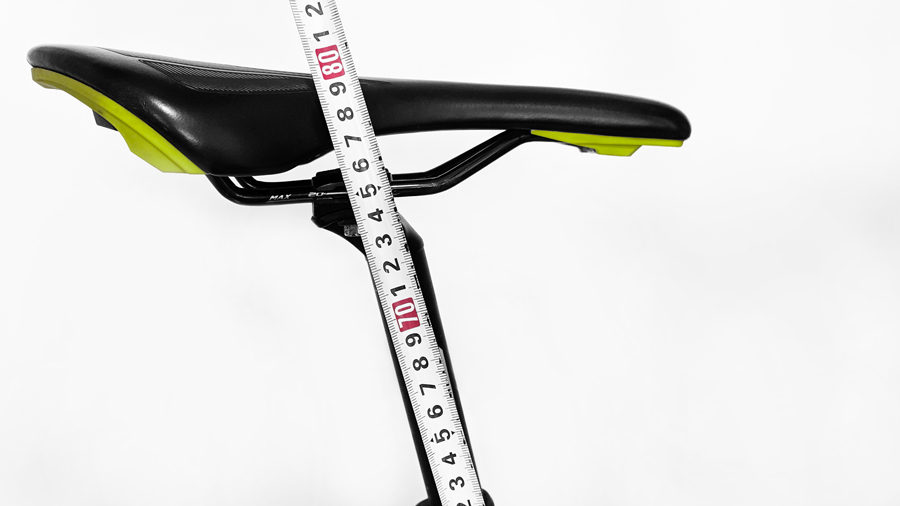
Riding a bicycle with the saddle height set incorrectly is not just an inconvenience, it’s dangerous, inefficient, and unhealthy. If you’re new to cycling and just bought your first bicycle, it’s important to get the saddle set to the correct height.
Most bicycles come with an easy-to-adjust seat post including measurement markings so you can see how high the seat is. However, if you don’t know how high should the bike seat be, you’ll need to measure a few things and adjust the seat accordingly.
Why Does Bike Seat Height Matter so Much?
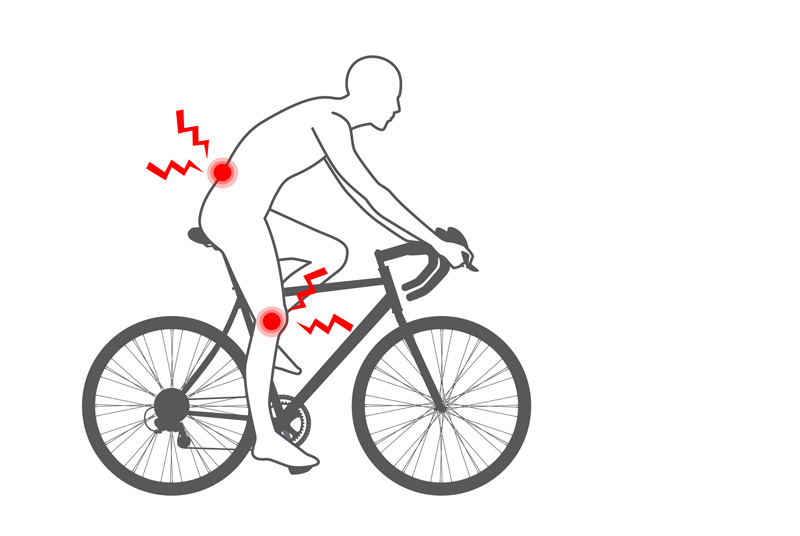
Riding with the wrong bicycle saddle height could cause knee and low back pain or injuries.
The height of your saddle directly affects how your legs operate the pedals, so if it’s too low you have to pedal harder and use unnecessary energy, which will negatively affect your cycling performance.
If it’s too high, you’ll struggle to keep your feet in place which could result in an accident. Over a long period of time, a saddle set at the incorrect height could cause damage to your joints and lead to knee pain or lower back pain.
How to Measure a Bike Frame — Our Easy-to-Follow Guide
Seat height can also differ depending on the cycling discipline, with road bike seat height usually set higher than mountain bike seat height for better aerodynamics.
Some mountain bikes also come with dropper seat posts so you can change the height depending on whether you’re cycling uphill or downhill.
Signs Your Bike Saddle Height May Be Wrong
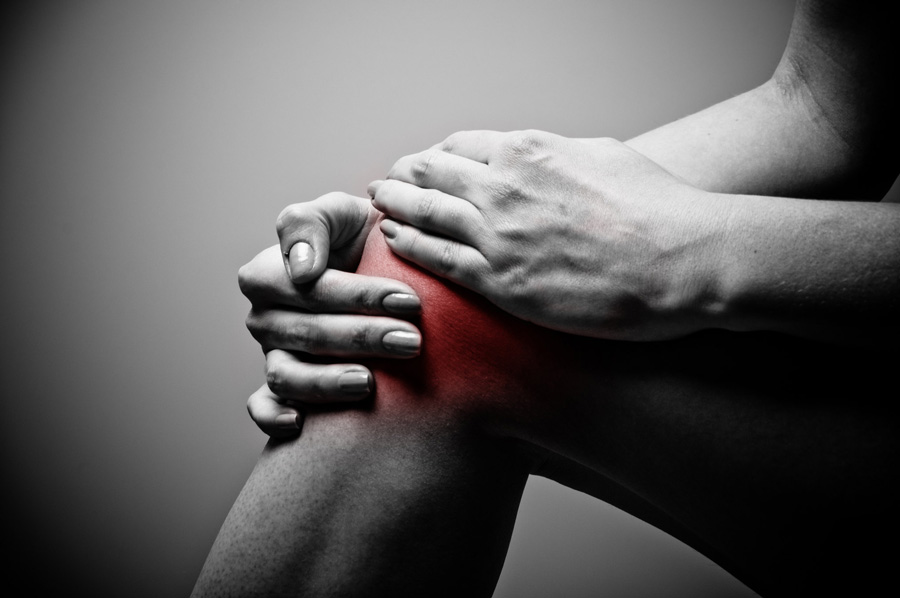
Photo by Esther Max under Creative Commons 2.0
The most common cause of incorrect saddle height is a pain in the knees. Cyclists who ride for long periods of time with a saddle that’s set incorrectly almost always end up with pain somewhere in their knees.
- If the saddle is too low, you’ll feel pain in the front of your knee.
- If the saddle is set too high, you will feel pain behind your knee.
In addition to knee pain, you could feel pain in your hips from rocking too much on the pedals, ankle pain from over-extending, and back or wrist pain from leaning forward too far. The saddle height determines your entire body position on the bicycle, so it’s vital that you set it correctly.
Before Adjusting Your Bike Seat Height
Although your saddle height is the most important setting, there are a few other things to check and adjust before setting the height, including sit-bones, fore-aft position, and tilt.
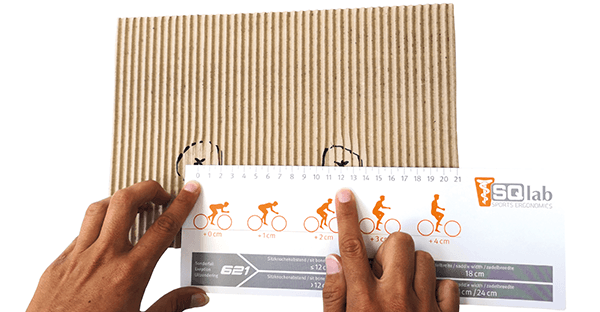
Measuring the correct sit bone width using a piece of cardboard and a ruler. Image source: sq-lab.com
Sit-bones: Firstly, you should make sure the saddle that you have fits your anatomy and supports your sit-bones correctly. These are the two bones at the bottom of your bum that connect directly with the saddle and take most of your weight. If your saddle doesn’t support and cushion these bones well, you’ll quickly get sore and uncomfortable. This helpful guide will show where should sit bones be on the saddle.
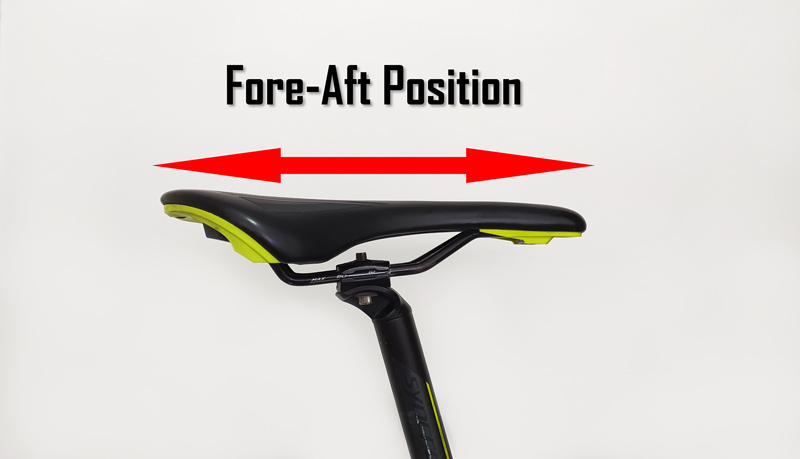
Adjust the fore-aft position by moving the saddle forward or backward.
Fore-aft: This defines how far forward or backward the saddle is on the seat post. You can adjust it by loosening the nut on the rails underneath the saddle. With your foot flat on the pedal as the crank sits horizontally, the front of your knee should be in line with the center of the pedal. To get this setting perfect, hang a plumb line from just below your kneecap to the spindle in the center of the pedal. With the fore-aft position set correctly, you should be able to balance easily while pedaling and not holding the handlebars.
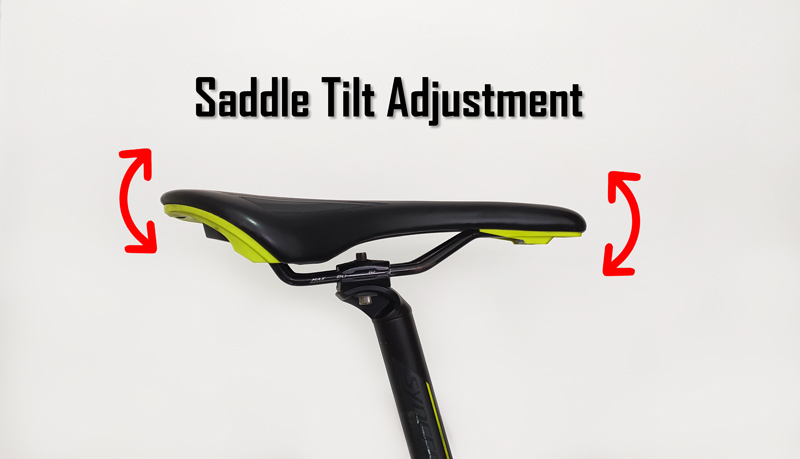
Your bike saddle should be perfectly level to the ground or have a slight forward tilt, based on your preferences.
Saddle tilt: This defines the angle of the saddle, which should be perfectly horizontal without leaning too far back or forward. It’s usually adjusted using a bolt underneath the saddle and a level tool to get the measurement right. Some riders prefer having their saddle tilted slightly forward, but you’ll have to decide this for yourself.
Clothing and shoes
When setting your bike saddle measurements, it’s best to wear the same clothes and shoes that you would typically wear on a ride. You’ll get a better feel for what position feels best in your riding gear. This is particularly important if you use clipless pedals, as it will affect the measurements significantly.
Three Methods to Find the Correct Bike Seat Height
There are a few different ways to measure how high the saddle on your bicycle should be. Follow these tips or use a bike seat height calculator to figure out your correct settings.
Heel-to-Pedal Method
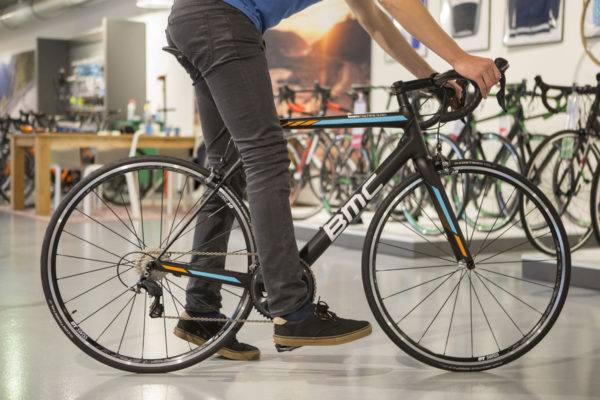
The heel to pedal method is the simplest and most common way of measuring your saddle height. It works on the logic that pedal efficiency is best when your leg is almost perfectly straight on the bottom of a stroke.
- Step 1: Sit on the bike and place your heel on one pedal
- Step 2: Rotate the pedal to its lowest possible position (6 o’clock)
- Step 3: Ensure your leg is straight and your heel is on the pedal center.
- Step 3: If your leg is not straight or your heel doesn’t reach, adjust the saddle height accordingly.
LeMond Method

Image source: myworldfromabicycle.blogspot.com/
The LeMond method is a more precise way of calculating saddle height, developed by legendary US racer Greg LeMond in the 1980s. It requires a few basic tools to measure, including a large book or similar object, a tape measure, a pencil, and a wall or any other flat, vertical surface.
- Step 1: Place a book between your legs right up to your inseam and stand against the wall.
- Step 2: Make a pencil mark on the wall at the top of the book and get your inseam height by measuring this mark from the floor.
- Step 3: Multiply your inseam height by exactly 0.883 and you should get the exact distance that the top of the saddle should be from the bottom bracket.
While the LeMond method works for the majority of body types, it doesn’t take into account legs that are comparatively longer or shorter than average.
Determining Proper Saddle Height with an App
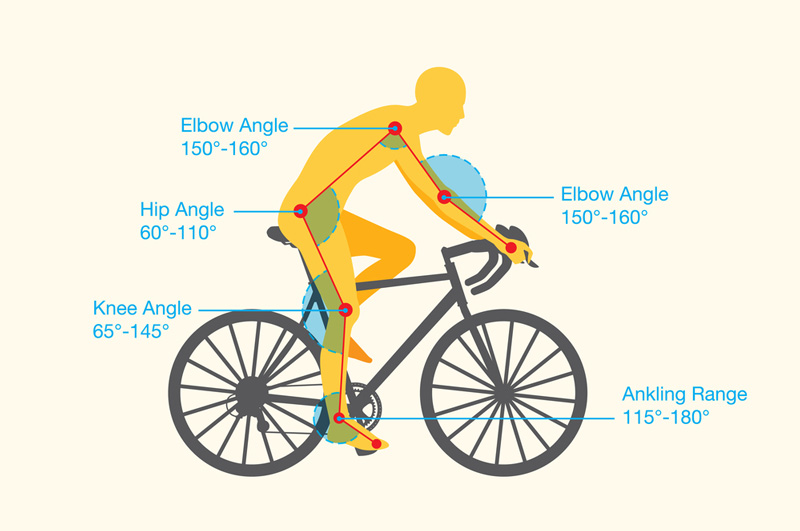
A dedicated bike fit app would allow you to get all of the angles on your bike right and your position dialed in.
There are smartphone apps available to help you determine your proper bike seat height but whether or not they are worth the money is debatable. Bike Fast Fit Elite is one such app, available on the App Store for $9.99 (not affiliated).
The app has good reviews and provides tools for determining your saddle height but it doesn’t offer anything that can’t be done with a free protractor or angle meter app. Of course, there are several other useful cycling features included in the app so if you are purchasing it anyway, the saddle height function is a nice bonus that works well.
This is a great way to do a quick bike fit at home, but it likely won’t replace getting a professional bike fit.
How Does Crank Length Affect Bike Saddle Fit?
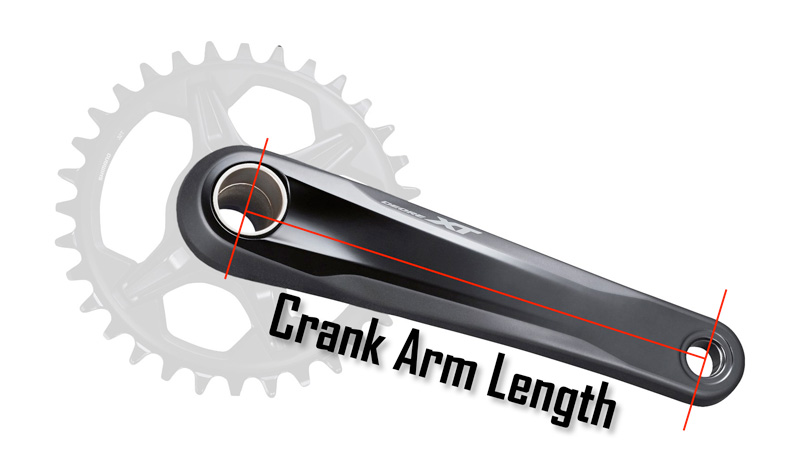
Crank length is measured from the center of the bottom bracket axle to the center of the pedal axle.
The crank arm is the piece of steel, carbon, or aluminum that connects your pedal to your bottom bracket. These come in various lengths depending on the riding style and bicycle size, with mountain bikes generally having longer cranks than road bikes.
Most people pay little attention to crank length and often say they can’t tell the difference from bike to bike. However, crank length does play a significant role in saddle fit and affects your knee extension, hip angles, and ankle angles.
For people of an average height between 175cm and 185cm, the industry-standard crank length supplied on most bicycles will be adequate. However, if you are significantly taller or shorter than average, you may want to consider getting cranks specially fitted to your needs.
If your cranks are too long, even a single millimeter change in saddle height will be noticeable, so it’s important to get this right. Over long periods of time, incorrect crank lengths can put a strain on your joints and cause injury.
Bonus: How to Make a Bike Seat More Comfortable?
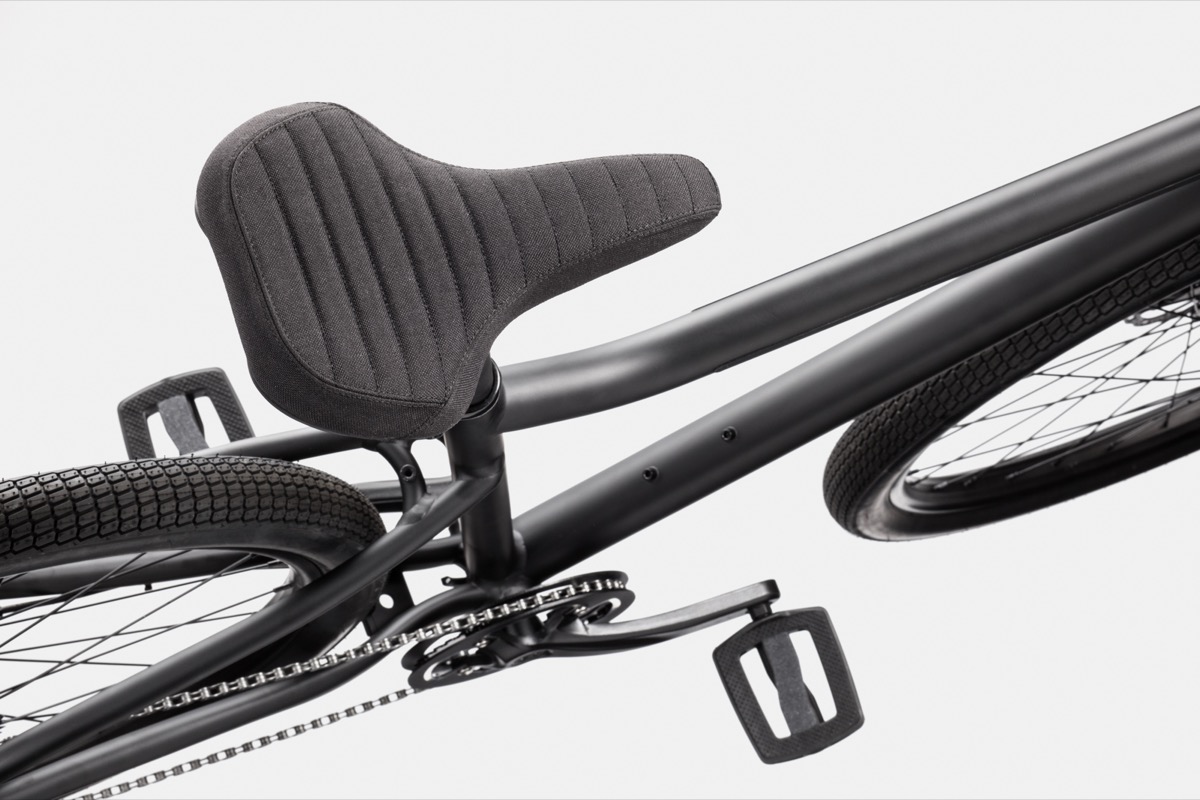
Comfort bikes typically have plush saddles that are comfortable for short to moderately long rides and don’t require you to wear padded shorts. | Image source: cannondale.com
Saddle sores are a common complaint amongst cyclists, with many people recommending fancy padded shorts, skin creams, or gel saddles. However, the most common cause of saddle soreness is either a cheap saddle or a badly fitted saddle.
Industry-standard saddles that come with cheap bicycles are usually no good for long-distance rides, such as completing a century and should be replaced as soon as possible.
How to Choose the Right Bike Saddle (That Really Fits)?
However, even a top-of-the-range saddle won’t be comfortable if it isn’t fitted correctly. Here are some tips to ensure you don’t end up with the dreaded saddle sores:
- Some initial soreness is inevitable – in the first few weeks of riding a bicycle, it will take some time for your sit bones to adjust to the pressure, so don’t give up immediately.
- If soreness continues after a few weeks, test a few saddles at your local bike store until you find one that fits your sit bones.
- Get a professional bike fitter to set your saddle perfectly to your anatomy, with the correct fore-aft position, level, and height.
- With a good quality, correctly fitted saddle you shouldn’t need padded cycling shorts for short or moderately long rides. In fact, for many people, padded shorts make it worse.
FAQ
Should you be able to touch the ground on a bike?
How do you determine the height of a saddle?
How do I know if my bike seat is too high?
Is it better to have a high or low bike seat?
Should my leg be straight when cycling?
How do you sit on a bike so it doesn't hurt?
Consider Also
Shop Bicycle Saddles on Jenson USA

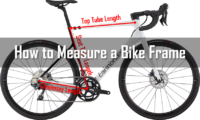



Step 3: Multiply your inseam height by exactly 0.883 and you should get the exact distance that the top of the saddle should be from the bottom bracket. — What/which bottom bracket? I’ve no idea what you are talking about.
Hi John, the term ‘bottom bracket’ refers to the lower center part of the bike where the pedal cranks and the crankset connect to the bike frame. The method you are referring to instructs you to measure from the center of the ‘bottom bracket’ to the top of the saddle. Hope this helps!